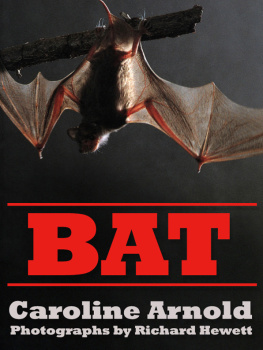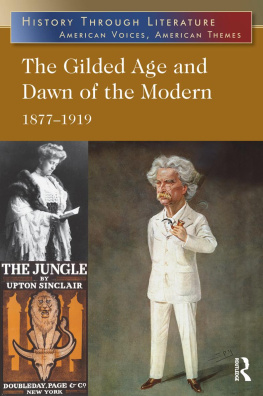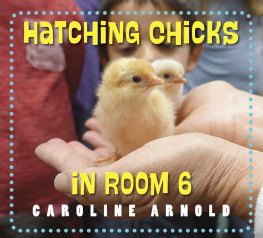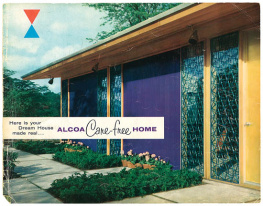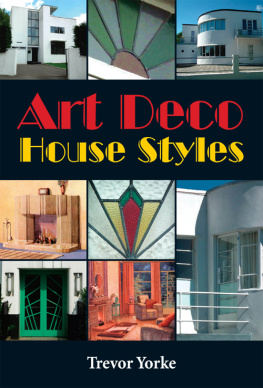
The
OPULENT INTERIORS
of the
GILDED AGE
All 203 Photographs from Artistic Houses, with New Text
A RNOLD L EWIS , J AMES T URNER, AND S TEVEN M C Q UILLIN
DOVER PUBLICATIONS, INC.
M INEOLA , N EW Y ORK
ACKNOWLEDGMENTS
Several friends have given us invaluable assistance, and we are indebted to them for their specific contributions and general support. We thank Miriam Stewart for her research on Boston families and houses, Lynne Marthey, Phyllis Clark, Catherine Fruhan and Charles Jeffrey for their observant comments on the photographs, Tracy Robinson for raising pertinent questions at the beginning of this study, Lynn Maston for her photographs of Boston exteriors and Mike Hubartt for his archival efforts.
We are also grateful to owners and managers of properties who provided us with condition reports of extant houses: Sister Helen Loretta, Alice Wadsworth Strong, Larry Nemer, Marylouise Lynch, Peter Woodbury, Anne T. Holmes and Walter Weller.
The assistance of many individuals who work for libraries, museums, educational institutions, local historical societies, city governments, landmark agencies and historical commissions enabled us to enrich the text and captions with useful contemporary information. We thank Jefferson Moak, Philadelphia Historical Commission; William McKenzie Woodward, Rhode Island Preservation Commission; Esley Hamilton, St. Louis County Department of Parks and Recreation; Helen Login, Public Library, Millburn, New Jersey; Janice Stanland, Pennsylvania Academy of the Fine Arts; Lewis Gould, University of Texas; Jeanne Henderson, Public Library, Watertown, Massachusetts; Cynthia Howk, Landmark Society of Western New York; Maizy Wedder-burn, Newark Public Library; Greer Hardwicke, Brookline Historical Commission; Elizabeth Roland, Sawyer Library, Gloucester, Massachusetts; Robert Starkey, East Orange Public Library; Lola Dudley, Mamaroneck Free Library; Valerie Gores, Yonkers Public Library; Ruth Hagstrom, Gloucester, Massachusetts; Mara Kerr, Oswego County Historical Society; William Presson, Cape Ann Historical Association; Herbert Bengtson, Manchester Historical Society; Patricia Schaap, Historian, Livingston County, New York; Thomas Hoctor, City Historian, New Rochelle, New York; Martha Oaks, Cape Ann Historical Association; Margaret Cushing, West Orange Public Library; Gladys ONeil, Bar Harbor Historical Society; Paul Glassman, Art Institute of Chicago; Deanna Kersnick, Luddington Library, Bryn Mawr, Pennsylvania; William Lane, State University of New York at Geneseo; Sandra Roff, New-York Historical Society; Edith McGandy, Hingham, Massachusetts; and Carolyn Durham, College of Wooster.
Finally, we are grateful to the College of Wooster, which has encouraged this project through its faculty-development program and a grant from The Henry Luce III Fund for Distinguished Scholarship. The research and writing of this project was also supported by the exceptionally generous leave program of the college.

This book is dedicated to one of its authors, James Turner (19371986)teacher, scholar, friend.

Copyright
Copyright 1987 by Dover Publications, Inc.
All rights reserved.
Bibliographical Note
The Opulent Interiors of the Gilded Age: All 203 Photographs from Artistic Houses, with New Text, published by Dover Publications, Inc., in 2016, is a reissue of the work originally published by Dover in 1987.
Library of Congress Cataloging-in-Publication Data
The opulent interiors of the Gilded Age.
Artistic houses, a work ascribed to GW. Sheldon, was originally published: New York: D. Appleton, 1883-1884.
ISBN-13: 978-0-486-25250-6
ISBN-10: 0-486-25250-7
I. Architecture, Domestic-United States. 2. Interior architecture-United States. 3. Interior decoration-United States-History-19th century.
I. Lewis, Arnold. II. Turner, James, 1937-1986. Ill. McQuillin, Steven. IV. Sheldon, George William, 1843-1914. V. Artistic houses.
NA7207.06 1987 728.370973 86-19816
Manufactured in the United States by RR Donnelley
25250707 2016
www.doverpublications.com
PREFACE
Artistic Houses was published in 188384 by D. Appleton and Company of New York. It was subtitled Being a Series of Interior Views of a number of the Most Beautiful and Celebrated Homes in the United States with A Description of the Art Treasures contained therein. The first volume, consisting of two parts, appeared in 1883, and the second, also in two parts, appeared in 1884. However, these four parts were not equal in length or in the number of plates and houses included. In the first volume, part one contained 86 pages and 49 plates of 14 different houses and part two 98 pages and 51 plates of 19 different buildings. In the volume published the following year, part one consisted of 107 pages and 50 plates of 29 houses and part two 91 pages and 53 plates of 35 separate structures. In all, there were 203 photographs taken from the interiors of 97 buildings, all but two of them houses.
As the publisher had done so successfully with Picturesque America, Artistic Houses was sold only through subscription, the plate and text becoming the exclusive property of its 500 subscribers. The book was distributed over the two-year period in ten sections, each containing from 19 to 22 photographs. Printed in imperial folio size on thick, white woven matt paper and containing clear phototypes processed by the highly respected Gutekunst Company of Philadelphia, Artistic Houses represented a level of publishing lavishness appropriate for the houses it featured. Each photograph, approximately 7 9, was printed on light board measuring about 14 20. In a note accompanying the tenth and final section, the writer explained that the publication had been much more expensive and time-consuming than had been anticipated, citing as causes painstaking care, repeated takes of the photographer, owners who complained of poor angles from which their rooms had been shot and glass plates broken in transit. Sometimes it has seemed as if the Fates themselves were in league against the appearance of a dilatory section. Despite such proclamations of conscientious preparation, the majority of photographs were printed reversed, printed from the wrong side of the negative. An error of this magnitude is incomprehensible, particularly when we know that the plates were distributed in ten parts over a two-year period. It seems reasonable to assume that some of the owners whose houses were included in the first set of plates, for example, former President U. S. Grant and his wife, or Mrs. A. T. Stewart, widow of New Yorks most influential dry-goods merchant, would have complained to the publisher that some of their rooms had been inaccurately publicized. There is no discernible pattern to the reversed photographs, though a higher percentage was printed correctly in the first volume than in the second. Only two of the 22 photographs in the last section have been identified as being correctly printed. The steps taken to determine whether a photograph in Artistic Houses was correctly printed will be discussed in the paragraphs explaining the differences between The Opulent Interiors of the Gilded Age and Artistic Houses.
The text was flattering, complimenting owners, architects and decorators for their roles in rescuing American rooms from the pre-Centennial dark ages of interior decoration and creating living environments reflecting the rising taste and artistic sensitivity of post-Centennial America. The domestic architecture of no nation in the world can show trophies more original, affluent, or admirable. Usually, the text addressed the rooms photographed, calling attention to the woodwork, the wall coverings, the materials used for the floors and ceilings, the hangings and the color scheme. It also contained references to specific paintings and sculptures within a room but did not identify carefully objets dart which had been collected by the owners. This text paid less attention to furniture, rugs, ceramics, the plan of the house and its exterior style and appearance. The author referred to decorators and architects occasionally, but did not elaborate and wrote virtually nothing about the families who inhabited these interiors. As the series progressed, the descriptions became shorter, suggesting that the initial enthusiasm of both author and publisher was not sustained throughout the two-year period.
Next page


